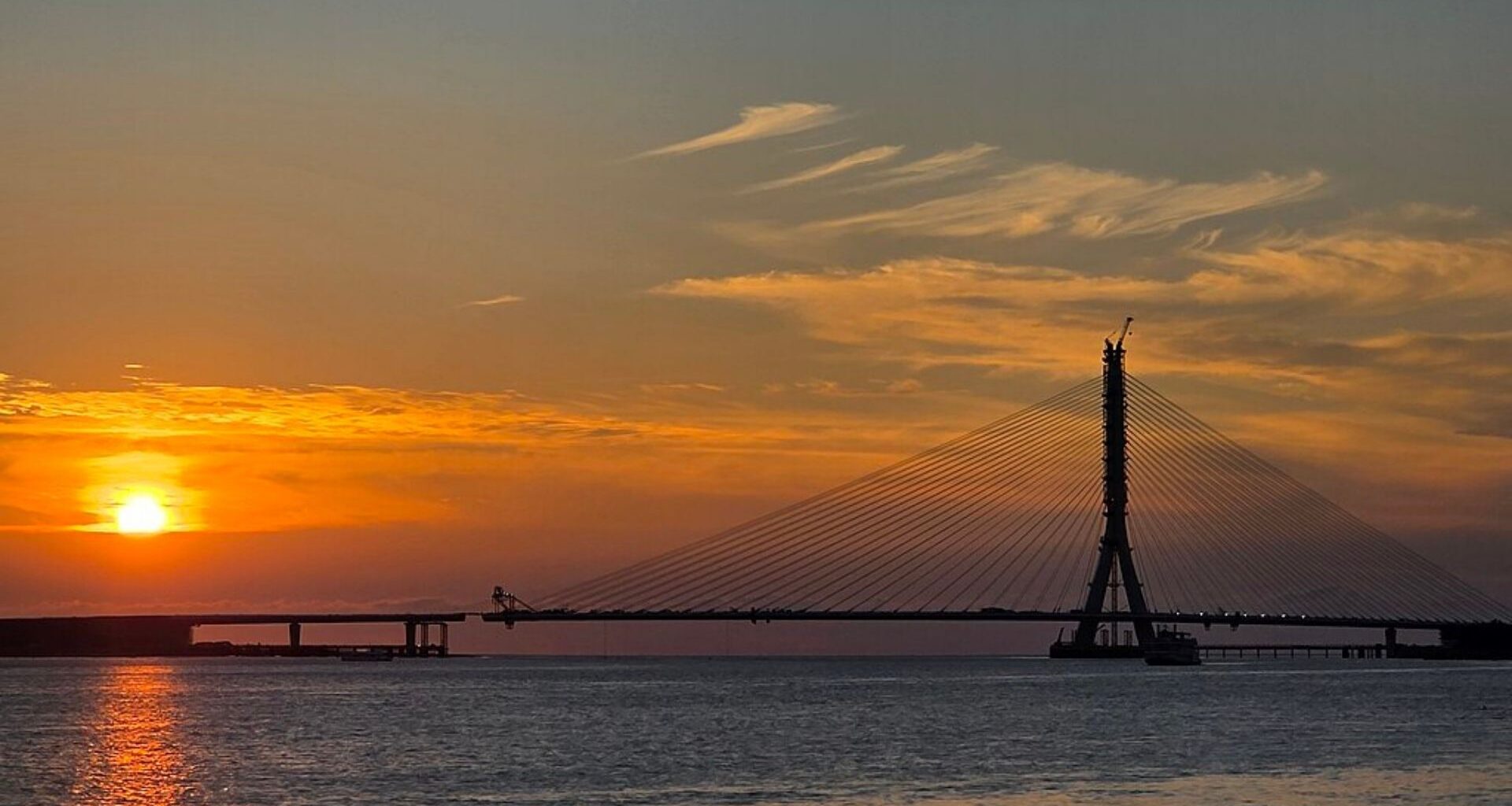Taiwan has officially installed the final section of the Danjiang Bridge, marking the structural completion of what could be the world’s longest single-tower, cable-stayed bridge.
Stretching elegantly over the Tamsui River near Taipei, the bridge represents a milestone in architecture and engineering – and a powerful symbol of Taiwan’s commitment to sustainable, forward-looking infrastructure.
Designed by Zaha Hadid Architects, the Danjiang Bridge is a sweeping, asymmetrical form that embodies the late architect’s signature style – fluid, organic, and futuristic.
Also known as Tamshui or Tamkang Bridge, it connects the districts of Tamsui and Bali in northern Taiwan. It is also expected to ease the congestion on the Guangdu Bridge and cut travel time between Bali and Tamsui by up to 25 minutes.
A work of art and engineering
The final installation was commemorated on Tuesday in a ceremony attended by President William Lai Ching-te, who hailed the bridge for its design.
“The Danjiang Bridge is a work of art and a world-class project,” he said.
Standing 200 meters (656 feet) tall, the central mast supports a total length of 920 meters (3,018 feet), with span of 450 meters (1,476 feet) and 175 meters (574 feet) stretching from each side.
This makes it the longest asymmetric cable-stayed bridge in the world – a structural feat achieved through cutting-edge engineering.
The bridge is designed with a seismic damper system, the first in Taiwan. The system makes it resilient against earthquakes up to intensity 7 – the highest level on the island’s scale.
The mast placement was also carefully chosen to preserve river navigability and minimize disruption to the Tamsui River estuary, a protected wetland ecosystem.
According to Zaha Hadid Architects, the bridge’s positioning was optimized to offer panoramic views of the setting sun from nearby viewing points, blending seamlessly into the surrounding landscape.
“Determined by detailed 3D modeling and mapping of the estuary, the position of the bridge’s sculptural mast within the river and the height of its road deck above the water’s surface have been calculated to maintain safe passage for river vessels and minimize impeding sunset views from popular viewpoints along the river,” explained Zaha Hadid Architects.
“The single-mast design also reduces the structure’s impact on the riverbed in line with stringent programs established to protect the estuary’s ecosystem.”
An ambitious journey
Construction began in 2019 but faced several delays due to its intricate design and the global impact of the COVID-19 pandemic. Despite the challenges, the $766 million project (according to The Taipei Times) stands today as a testament to Taiwan’s perseverance and technical expertise.
The bridge is expected to handle around 25,000 visitors during the holidays, reinforcing its role as a key attraction.
Taiwan’s transport ministry emphasized that the design balances aesthetic beauty, cultural values, and environmental sensitivity, ensuring the structure enhances mobility and tourism in northern Taiwan.
Although the structure is complete, several final phases remain – including paving, lighting installation, cable inspections, and load testing. The Danjiang Bridge is expected to open on May 12, 2026.

